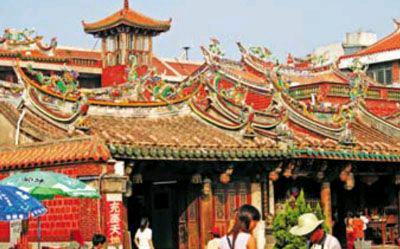Quanzhou:Starting Point of the Maritime Silk Road
2015-03-16byGongHaiying
by+Gong+Haiying

Located on Chinas southeastern coast, Quanzhou, Fujian Province, includes more than 400 kilometers of coastline dotted with four bays and 16 ports. A major port for maritime traffic and trade in ancient China, the city has been identified by UNESCO as the starting point of the ancient Maritime Silk Road.
Quanzhou has been dubbed the “largest harbor in the East.”In the spring of 1291, Italian traveler Marco Polo arrived in Quanzhou, which deeply impressed him. In his travel notes, he raved about the city, then known as Zaitun, as the “largest harbor in the world, a gathering place for numerous businessmen and a distribution center for heaps of cargo. It is unbelievable.”
The maritime traffic in Quanzhou started during the Southern Dynasties (420-589), and across the following four centuries, the city maintained close trade contact with nearly 100 countries. Quanzhous heydays featured flowing silk, timeless ceramics, aromatic perfumes and medicinal herbs shuttling between China and other countries along the Maritime Silk Road. It was even nicknamed “Porto Alexandre in China.”
In 2007, an 800-year-old merchant ship, Nanhai One, was salvaged from the bottom of the sea, evidencing the worlds most sophisticated shipbuilding technology in the era and proving Quanzhou a production center for seagoing vessels. January 28, 2015, was a big day for the city because over 60,000 pieces of porcelain made during the Southern Song Dynasty (1127-1279) were brought to light, shedding light on flourishing ancient Quanzhou.
The constant trading drew streams of Arab and Persian merchants, making the city the largest community of natives of the Middle East residing in the Far East during the Southern Song and Yuan (1271-1368) dynasties, and they left behind abundant materials and cultural legacies.
Today, traces of the Arab and Persian civilizations can still be found in many places of historical interest including Qingjing Mosque, one of the oldest mosques in the country, and one which has preserved massive Islamic inscriptions on stone tablets, Mus- lim Tombs in Lingshan Mountain on the eastern outskirts of the city and stone carvings recording the journeys and ceremonies to pray for smooth sailing of ancient merchant ships.
Since the launch of the Belt and Road Initiatives in 2013, Quanzhou, as the starting point of the ancient Maritime Silk Road, has spared no efforts to become a “pilot for the construction of the 21st-Century Maritime Silk Road” and upgrade into a “metropolis of diversified culture,” a fountainhead of East Asian culture with its door open wider to the world.
To this end, the city has heavily increased its maritime trade and cultural communication with countries along the Road. A recent survey by the Quanzhou Bureau of Commerce shows that in 2014, the city realized US$15.76 billion in trade volume with these countries, a year-on-year growth of 5 percent. The Middle East has become Quanzhous largest trade partner as well as its market for exports with the fastest growth – 27 percent.
In 2015, Quanzhou announced the idea of becoming a “core area of the 21st-Century Maritime Silk Road” and has started planning for pilot areas with efforts to accelerate development of humanities, planning and design, infrastructure, maritime cooperation, and cultural exchange.
Quanzhou, an ancient harbor, is now ready to embrace new brilliance in the future.